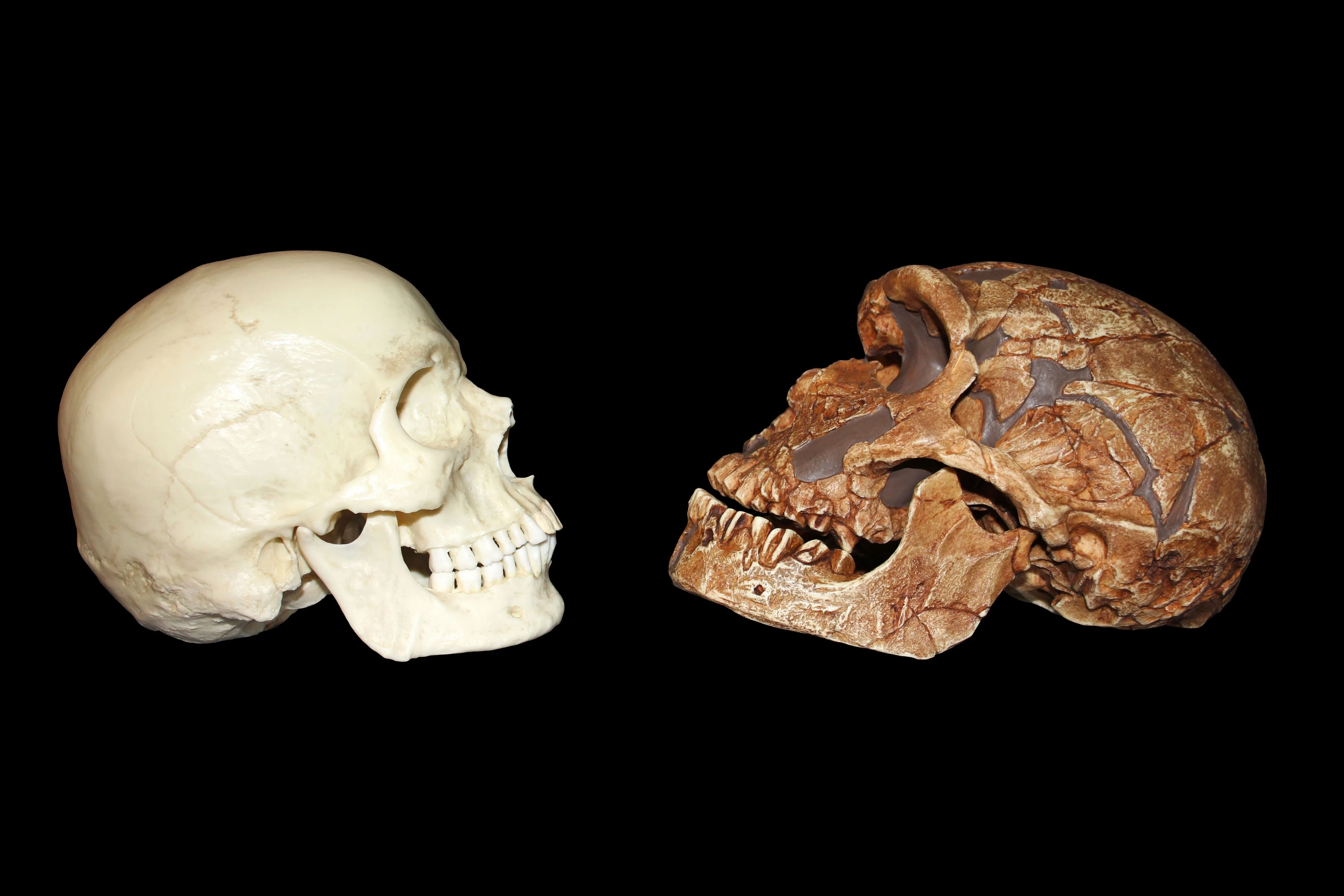Our understanding of our distant ancestors and their kin was formed in the 19th and 20th centuries. Back then, there were no signs of any significant breakthroughs. Skulls, jaws, and, more commonly, phalanges and teeth filled museum reserves, prompting only subdued excitement in the specialized academic press. However, in the 2000s, everything changed with the emergence of a new science - paleogenetics. It gave voice to long-muted remains, unveiled a hitherto undiscovered human species, and provided unparalleled insight into the lives of our ancestors, whose legacy had been preserved solely through bone fragments across the ages.
Professor Alexander Markov shares the incredible discoveries made over the past decade. Humans, collectively referred to as Homo, emerged about 2.5 million years ago from a diverse group of African bipedal apes known as australopithecines.i

Pleistocene Magafauna including Giant Sloths Megatherium americanum and Mastodonts Cuvieronius hyodon, Glyptodon clavipes/Alamy
This era in science is commonly referred to as the Pleistocene,i

Paranthropus boisei, artwork/Alamy
TEETH vs BRAINS
The main distinguishing features of Paranthropus were their very powerful jaws and teeth, which allowed them to consume coarse and tough plant-based food. In contrast, Homo gradually weakened and reduced their jaws and teeth, while their brains, conversely, began to increase. Ultimately, intelligence triumphed over strength and dental prowess. Let's attempt to understand what lead to this first success of humanity.

Late Pleistocene landscape in northern Spain with woolly mammoths © Public Library of Science
Most likely, brain growth was linked to the systematic production and use of stone tools, which gradually became more complex and refined. Apparently, early Homo initiated a unique evolutionary process of accumulating cultural achievements. By culture, we mean skills and behavioral characteristics transmitted from generation to generation through teaching. Elements of culture also exist in other animals, but only humans learned to systematically accumulate, combine, and improve these skills.

Paranthropus boisei; Staatliches Museum für Archäologie Chemnitz/Einsamer Schütze/Wikimedia Commons
Two processes - cultural development and brain enlargement - created a loop of positive feedback in our ancestors: as cultural wealth accumulated, the ability to rapidly absorb it strengthened. Consequently, the brain expanded, laying the groundwork for further cultural advancement, which, in turn, fueled brain development. In essence, brain and cultural evolution mutually supported each other, resulting in an unprecedented threefold increase in brain volume in Homo over just two million years in mammalian history.
THREE TYPES OF PEOPLE
Around 1.8 million years ago, or slightly earlier, individual groups of Homo began sporadically leaving their African homeland and dispersing across Eurasia. At that time, the dominant species of humans was Homo erectus (Latin for "upright man"), which encompassed numerous races and varieties. The next stage of Homo evolution is associated with the large-headed descendants of erectus known as Homo heidelbergensis. This was a diverse collection of populations evolving across Africa, Europe, and Asia. One such population, probably living in Africa around 700,000 to 900,000 years ago, split into three branches. One branch remained in Africa, another migrated to Europe, and the third moved eastward into Asia.

Reconstruction of Turkana boy with light clothing by Adrie and Alfons Kennis© Neanderthal Museum, Holger Neumann
These branches eventually became the three most advanced, intelligent, and culturally sophisticated human species: sapiens (Latin homo sapiens - wise man), Neanderthals,i

We'll be delving into them and exploring the recent revelations about these three species of intelligent and cultured individuals, made possible by the emergence of the remarkable field of paleogenetics, along with discoveries by archaeologists and advancements in dating methods for archaeological and paleontological artifacts.
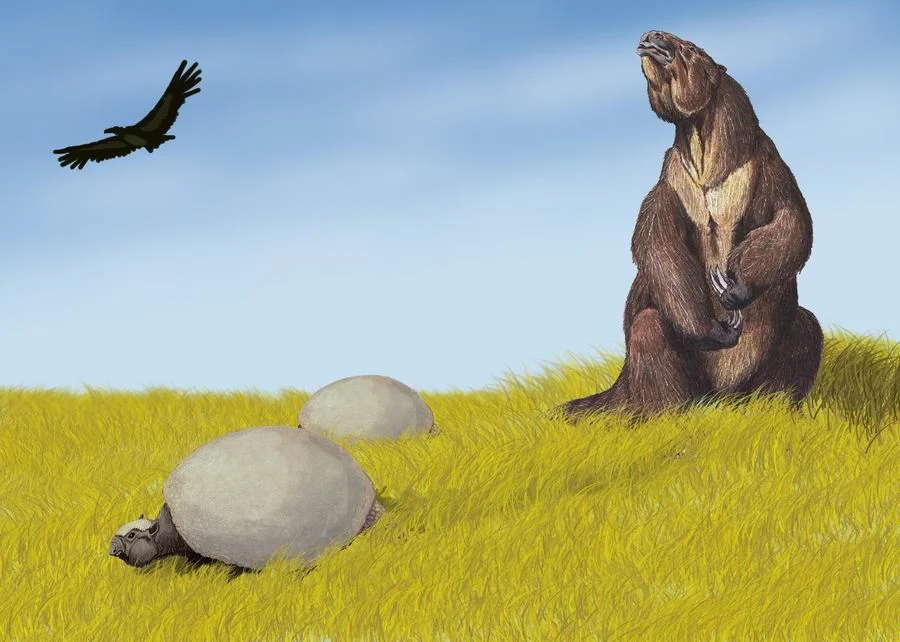
Pleistocene Magafauna including Giant Sloths Megatherium americanum and Mastodonts Cuvieronius hyodon, Glyptodon clavipes/Alamy
THE DISCOVERY THAT SHOOK THE WORLD
Europe was the homeland of the Neanderthals. Once, 38 thousand years ago, on the territory of modern-day Croatia, a Neanderthal lived (for a long time, it was believed to be a male). He hunted, ate, loved, dreamed, gazed at the starry sky, suffered from burnout, and had no idea that his bones would lead to a fantastic discovery in the distant future. The remains of this mysterious individual were kept in Zagreb, the capital of Croatia, where they were found by Professor Svante Pääbo from the Max Planck Institute for Evolutionary Anthropology in Leipzig. These bones caught the professor's attention because they preserved a sufficient amount of ancient DNA and were almost uncontaminated by the DNA of modern humans, meaning other scientists had hardly studied them.

DNA sculpture, Neanderthal Museum in Krapina, located near one of Europe's most important paleontological sites and opened in 2010, Krapina, Croatia/Alamy
Professor Pääbo shared part of this unique material with a group of American colleagues. American and German researchers used different methods, and in 2006, they simultaneously published their first results. The main conclusion was that reading the complete genome of a Neanderthal is a feasible task. This significant breakthrough instantly transformed paleogenetics into a solid scientific discipline. Several more years were spent on the "draft" reading of the Neanderthal genome. In 2009, Svante Pääbo announced at the annual meeting of the American Association for the Advancement of Science that the Neanderthal genome had been broadly read. Just a few years ago, the project's price tag of only 6.4 million dollars would have seemed incredibly low.
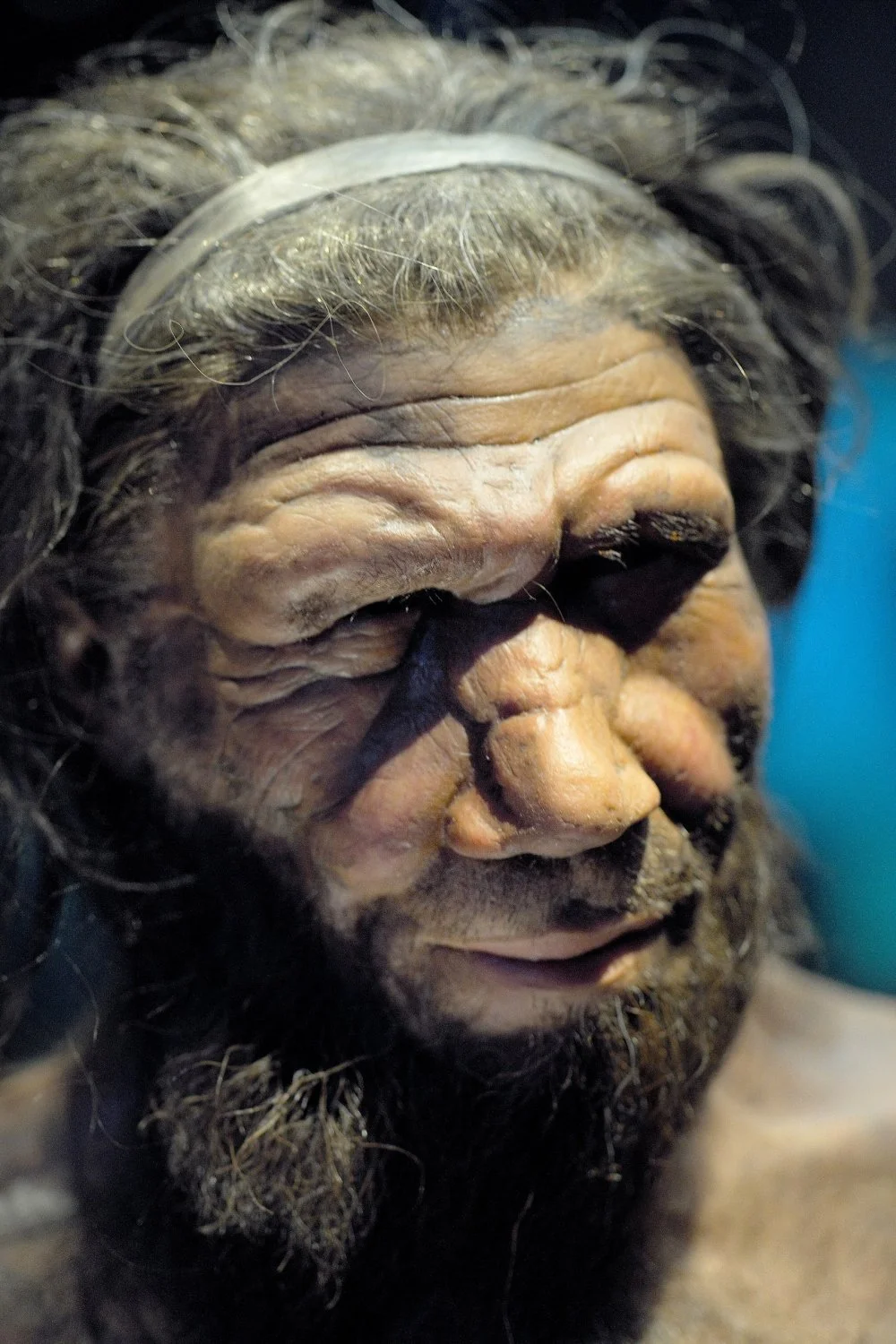
Neanderthal man reconstruction, Natural History Museum, London/Werner Ustorf/Wikimedia Commons
However, the official publication of the results had to wait for about another year: it was necessary to complete the computer processing and analysis of the obtained sequences. Along the way, it was discovered that the bones from which the DNA was extracted belonged to three women, not to one man, as previously believed. They lived between 44,000 and 38,000 years ago, shortly after the arrival of African immigrants in Europe—sapiens, or thinking humans, to which we belong (although, it must be admitted, not always justifiably).
YOU ARE A NEANDERTHAL!
This was not the only discovery. For a long time, most scientists, including Svante Pääbo himself, were convinced that when sapiens left Africa, they ultimately displaced all ancient Eurasian humanity without mixing with it. More advanced sapiens simply annihilated Neanderthals. However, geneticists proved that ancient sapiens did indeed interbreed with Neanderthals. This means that their relationship was richer and more diverse than war, cannibalism, and other forms of genocide. They loved, suffered, gave birth to children, and probably also reasoned that genuine feelings surpass all prejudices.
The genome of Neanderthals differs from that of modern humans by 0.16%. On one hand, these differences are small—just a fraction of those between human and chimpanzee genomes. This aligns well with the evolutionary timeline: the time since the split between sapiens and Neanderthal ancestors is roughly ten times shorter than the time since the split between human and chimpanzee ancestors. Human ancestors (still quite unlike us) diverged from chimpanzees around 6.5 million years ago. The divergence between Heidelbergensis, the ancestor of Neanderthals and sapiens, happened approximately 300,000 years ago. Well, give or take.

Fossil skull of Homo Erectus, Sapiens, Neanderthalis and Antecessor/Alamy
On the other hand, there has emerged the possibility to identify genetic characteristics that define our "uniqueness"—Primarily, these are the genome details (such as nucleotide substitutions, insertions, gene duplications, etc.) that are the same between Neanderthals and chimpanzees but differ in us. These elements, evidently, are not inherited from a common ancestor and appeared in our lineage after the split between sapiens and Neanderthals.
It was found that the functions of genes that changed in the sapiens lineage after its separation from Neanderthal ancestors are linked to appearance (skin, hair, pigmentation), energy metabolism (adaptation to various climatic conditions, etc.), and, most importantly, brain function. In other words, we are more beautiful, adaptive, and intelligent than Neanderthals, something we had suspected previously.
The most remarkable results emerged from comparing the genome of Neanderthals with those of five modern individuals—a European (French), a Chinese, a New Guinean, and two indigenous Africans from South and West Africa. The revelation was that the Neanderthal genome appeared slightly more similar to the genomes of Europeans, Asians, and Papuans than to those of Africans. These findings unmistakably suggested interbreeding between sapiens and Neanderthals, affecting Eurasian sapiens populations but not African ones. Furthermore, all Eurasian populations carry approximately the same percentage of Neanderthal genes. Every modern human, except for indigenous Africans, carries about 1-4% (averaging around 2%) of Neanderthal genes in their genome.

A funeral meal during the stone age. From L'Homme Primitif, published 1870/Alamy
If Neanderthal genes had been scattered uniformly among all human populations, researchers would not have been able to detect them using the available methods at the time. Evidence of interbreeding, or as it's commonly referred to in science, hybridization, was obtained solely because Neanderthal genes did not enter African sapiens populations.
WHY ISRAEL REMAINS A KEY LOCATION
The initial interaction between Neanderthals and sapiens likely occurred 120 - 180 thousand years ago in the Middle East. Some sapiens probably recoiled at the sight of these not-very-intelligent, short-statured individuals with broad hips, low foreheads, powerful jaws, and sloping chins. Yet others found something intriguing about the Neanderthals. Intelligence, of course, matters. However, if intelligence alone drew us to others, we would be on an entirely different evolutionary trajectory.
In several caves in northern Israel (such as Skhul, Tabun, and Kebara), layers of cave deposits alternate between the remains of modern humans and Neanderthals. Apparently, during cold periods, sapiens retreated back to Africa from here, while Neanderthals moved in from the north. Conversely, during warmer periods, the process reversed. However, it seems someone always lagged behind in leaving. Some bones found here were once thought to belong to hybrids between Neanderthals and sapiens. Such interpretations fell out of favor, but now paleogenetic data have brought them back into consideration.
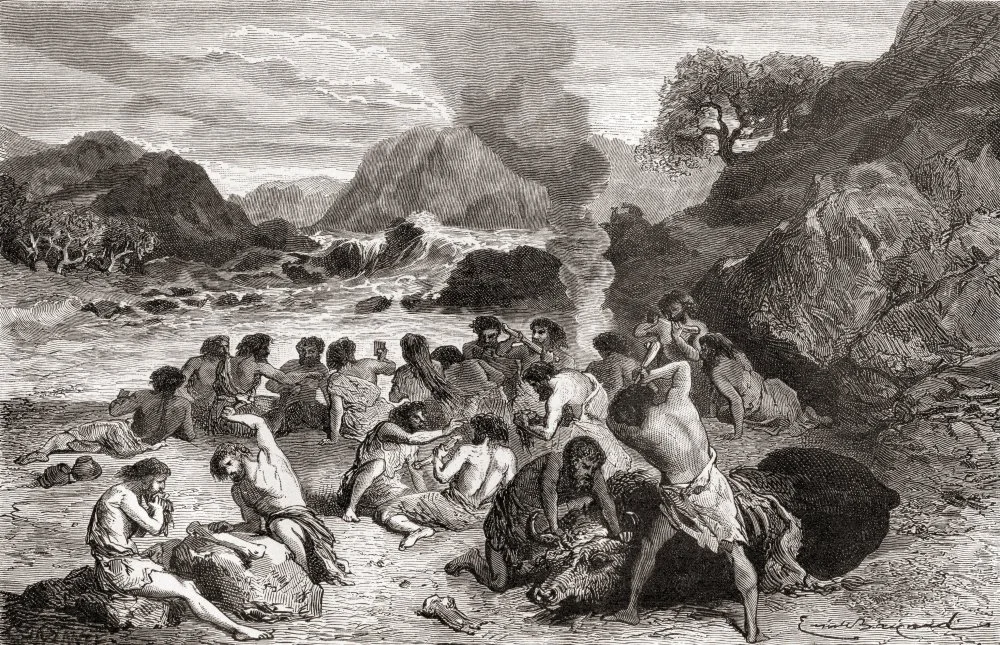
Neanderthal man feasting on their kill during prehistoric times. From L'Homme Primitif, published 1870/Alamy
According to estimates from Israeli archaeologists, the coexistence of modern humans and Neanderthals in the Middle East could have lasted for about 10,000 years. Though seemingly brief, all of human civilization—states, armies, philosophy, literature, poetry, lighters, computers, comics, Hollywood, and Billie Eilish—fits into roughly 5,000 years.
In other words, ten thousand years proved sufficient for two populations to exchange genes. Although rare, we would like to believe that passionate encounters between sapiens and Neanderthals left a mark on the genome of modern humans. When sapiens began to spread from the Middle East across the expanses of Eurasia, they already carried Neanderthal genes within them.
Thus, traces of ancient mixed marriages remain in the genes of modern humans. However negligible this legacy might be, it's impossible now, without some philosophical caveats, to claim that Neanderthals went entirely extinct. Furthermore, we now know that genuine, purebred sapiens are the dark-skinned population of Africa south of the Sahara. All others are slight hybrids.
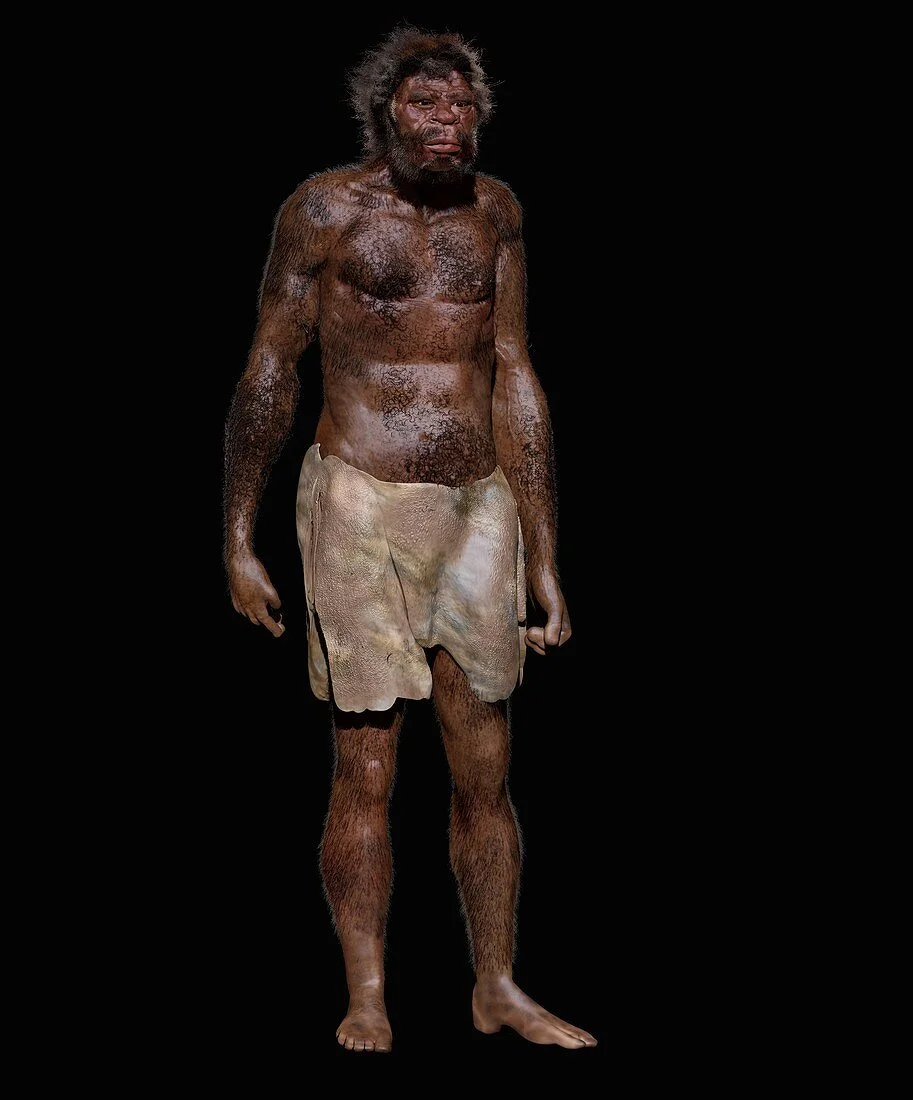
Homo sapiens from Morocco. Reconstruction based on remains dating back 300,000 years / Science Photo Library / JOHN BAVARO FINE ART
The Child of Altai Incest
Among the Croatian Neanderthals, whose interactions sparked the rise of paleogenetics, another connection emerged from Altai. It all began in 2010 when archaeologists uncovered a toe bone (known as sample Denisova 5) in the Denisova Cave in Altai, in the same layer where a new human species had been previously discovered — the Denisovans (whom we will discuss in the following lecture). In 2014, Svante Pääbo and his team successfully extracted a complete nuclear genome from the Denisova 5 bone.
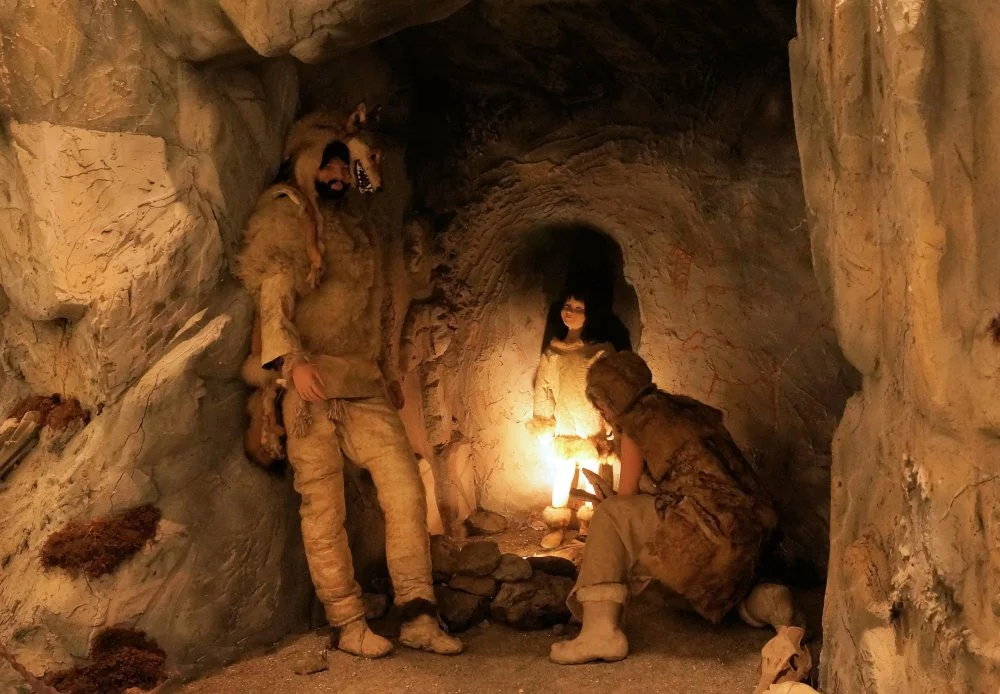
The Denisovan family. Reconstruction/Wikimedia commons
Surprisingly, the genome turned out to be not Denisovan but Neanderthal, precisely that of a Neanderthal woman. Her gender was determined by the absence of fragments of the male Y chromosome and the presence of two variants of the X chromosome. Neanderthal remains had been found in Altai before, but the presence of two human species in one cave and even in the same archaeological layer astonished everyone. However, it is unlikely that the Neanderthal Denisova 5 visited the Denisovans for a social gathering; most likely, they had been separated by tens of thousands of years.
The Neanderthal woman's finger preserved DNA exceptionally well, allowing for a much more detailed analysis of human genetic evolution. The Neanderthal stranger from the Denisova Cave is the product of incest. Her parents shared about 25% of identical genes. This indicates they were siblings at the half-sibling level, sharing the same mother and different fathers, or vice versa. They could also have been an uncle and niece, aunt and nephew, or even, by some twist of fate, grandfather and granddaughter or grandmother and grandson. All these scenarios correspond to a 25% level of genetic relatedness.
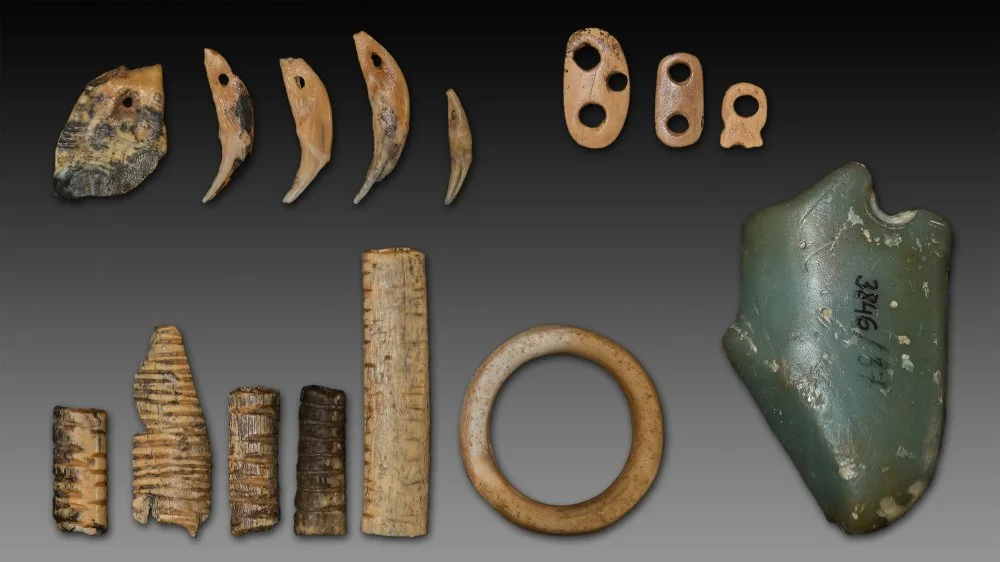
Artifacts from the Denisovskaya Cave/Wikimedia commons
Denisova 5 lived approximately 120,000 years ago. After her genome was sequenced, a new, refined list of potentially critical genetic changes that occurred in our ancestors after separating from the ancestors of Neanderthals and Denisovans was compiled. The list is not extensive: it comprises just 96 amino acid substitutions across 87 proteins and approximately three thousand changes in regulatory regions. However, among the altered genes, a higher percentage are associated with brain development. This is one of the arguments supporting the notion that the brain and cognition of sapiens were not the same and differed significantly from those of Neanderthals and Denisovans, being notably superior.
ALADDIN'S CAVE
The systematic and incredibly meticulous excavations conducted over many years in the Denisova Cave under the leadership of Academician A.P. Derevyanko provided invaluable material for paleogenetic research. This is remarkable considering that, from the perspective of classical archaeology, the material appears relatively modest: at best, individual teeth or finger phalanges. However, as practice has shown, even a single phalanx, let alone two, opens up a whole new world for paleogeneticists. The genome of the Denisovan human was isolated from one such phalanx (Denisova 3), and the genome of an Altai Neanderthal was isolated from another (Denisova 5); both genomes were sequenced with exceptional quality. Paleogeneticists also found three teeth useful (Denisova 2, 4, and 8), from which fragments of nuclear genomes of three more Denisovans were extracted. Apparently, the conditions in the Denisova Cave are exceptionally favorable for preserving ancient DNA.
However, even such finds as recognizable human teeth or finger phalanges are quite rare. The bulk of the bone material collected in the Denisova Cave consists of small, unidentifiable fragments of unknown animal species. Nevertheless, this does not deter paleogeneticists. They boldly tackle the tiny, indistinct fragments.
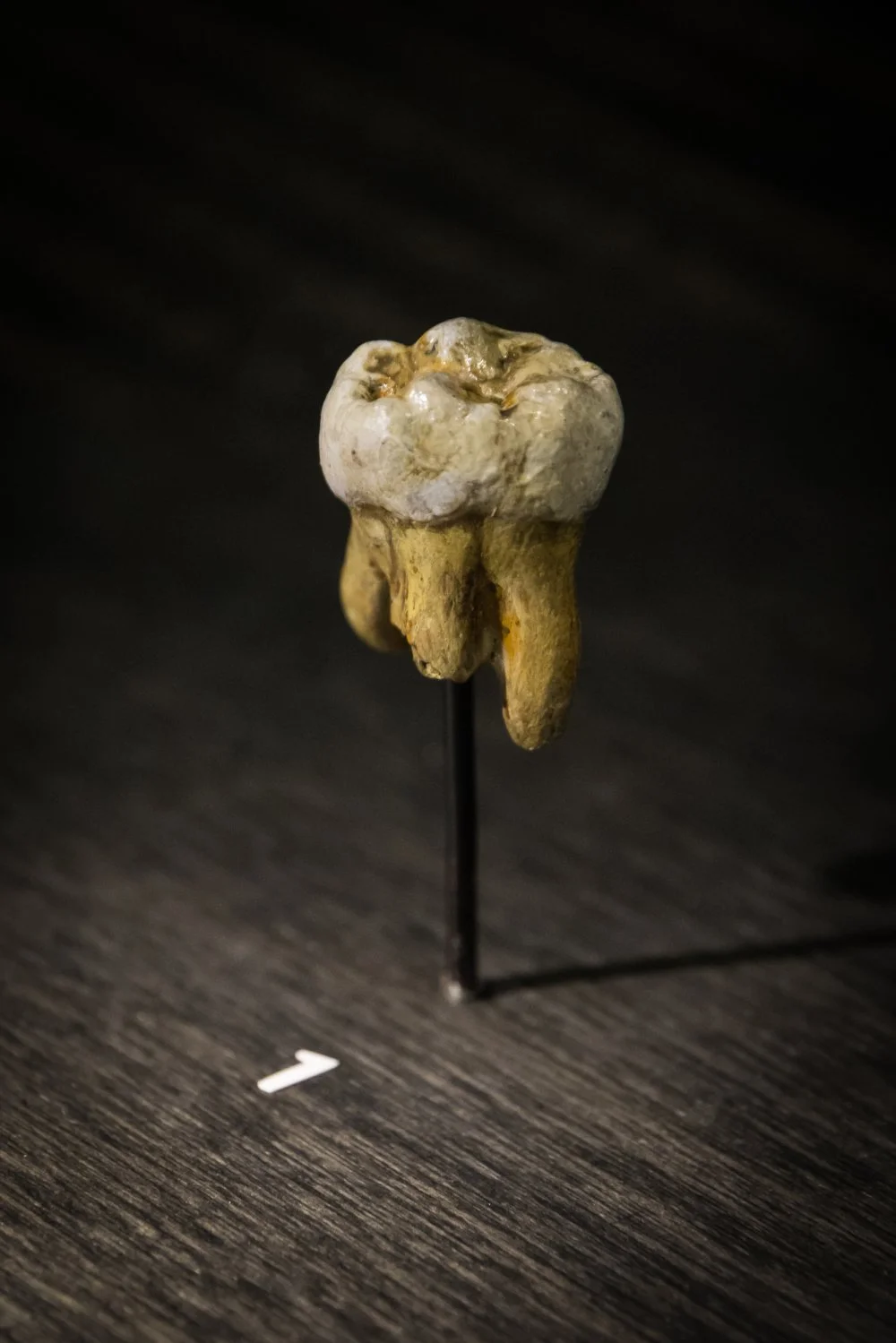
Replica of a Denisovan molar, originally found in Denisova Cave in 2000, at the Museum of Natural Sciences in Brussels, Belgium/Thilo Parg/Wikimedia Commons
The key here is to determine which of the bone fragments belonged to humans. A recent discovery offers an elegant solution to this challenge. It appears that even the smallest bone fragment can be identified, if not to the species, then at least to the order, if it contains preserved collagen—a highly resilient protein that often survives better than DNA. Fragments of ancient collagen extracted from bones are analyzed using mass spectrometry.i
After analyzing over 2000 fragments, scientists discovered a single human bone which was named Denisova 11. Initially, mitochondrial DNA was extracted from it, which turned out to be Neanderthal. Radiocarbon datingi
At the time of death, the individual was at least 13 years old—evidenced by the thickness of the bone's outer layer. Interestingly, based on the erosion on the fragment's outer surface, it's highly probable that it passed through the digestive tract of a predatory animal. Thus, Denisova 11 was either wholly or partially consumed by an unknown monster.

Denisova 11 / Science Photo Library/JOHN BAVARO FINE ART/Alamy
However, her demise was not in vain, nor were the efforts of paleogeneticists. In August 2018, an article emerged in the journal Nature detailing the preliminary sequencing of the nuclear genome of the individual Denisova 11. Who was she—a Denisovan or an Altai Neanderthal? It gets even more intriguing: Denisova 11 turned out to be a first-generation Neanderthal-Denisovan hybrid.
Denisova 11 was a woman commonly referred to as "Denny" in popular sources. To determine her species, scientists compared her genome with three others: Denisovan (Denisova 3), Altai Neanderthal (Denisova 5), and a modern African. They found that Denny shared an identical degree of relation with Neanderthals and Denisovans. It was confirmed that Denny was a first-generation hybrid, with her mother being a Neanderthal, evidenced by her mitochondrial DNA, and her father being a Denisovan.
A more detailed analysis revealed that Denny's genome contained five small regions where both chromosomes carried characteristic Neanderthal alleles (variants of the same gene), while Denisovan ones were almost absent. This suggested a minor infusion of Neanderthal genes in the Denisovan population, to which Denny's father belonged, likely originating from a more ancient instance of interbreeding. Researchers estimated that this episode could have occurred 300–600 generations before Denny's father was born. Interestingly, his Neanderthal spouse and the ancient Neanderthals who contributed to his genome probably originated from different Neanderthal populations.

Homo sapiens neanderthalensis ©Holger Neumann/Neanderthal Museum
As for Denny's Neanderthal mother, she surprisingly turned out to be more closely related to Croatian Neanderthal females than to her more ancient contemporary from the same Denisova Cave, who left behind a toe bone (Denisova 5). This suggests extensive migrations of Neanderthal tribes. For instance, it is possible that roughly, sometime after about 120,000 years ago—the approximate time of Denisova 5's life—European Neanderthals arrived in the Altai region and displaced the local population. Additionally, data on the genomes of late European Neanderthals also indicates distant migrations. In short, humans have been fond of traveling for quite a long time.
WANDERING NEANDERTHALS
By 2022, the number of sequenced Neanderthal nuclear genomes had grown to 18. Bones yielding sufficient DNA for decoding nuclear genomes have been found at 14 locations scattered across the extensive range of Neanderthals from Gibraltar to the Altai. These invaluable paleogenetic data have revealed many intriguing details about the evolution of late Homo, the history of Neanderthal populations, and the interbreeding of Neanderthals with sapiens and Denisovans. Much less is known about the social structure of Neanderthals, such as how their groups were organized and the connections between them.

eanderthal hunters depicted in the Gallo-Romeins Museum Tongeren (Belgium)/Wikimedia commons
Nevertheless, consider this: In 2010, when fragments of mitochondrial DNA from 12 Neanderthals were successfully sequenced from the El Sidrón cave in Spain—individuals who, based on the archaeological context, perished simultaneously—it supported the hypothesis of Neanderthal patrilocality. Translated from scientific jargon, this means "born where one stays." In other words, males remained in their native community, while young females joined other groups (because all the males from El Sidrón had the same mitochondrial DNA, while all the females’ differed). However, mitochondrial DNA fragments are insufficient for firm conclusions; nuclear genome data are needed for that.
It was precisely such data—the nuclear genomes of 14 individuals, many of whom lived simultaneously in one place, with some even being close relatives—that Svante Pääbo and his colleagues managed to extract from Neanderthal teeth and bones found by Russian archaeologists in two Altai caves: Okladnikova (2 genomes) and Chagyrskaya (12 genomes). Thus, the total number of Neanderthal genomes increased from 18 to 32 at once.
Traces of Neanderthals in Chagyrskaya Cave date back to a period between 51,000 and 59,000 years ago. Neanderthals in Okladnikova Cave likely lived around the same time. Out of the 14 genomes of late Altai Neanderthals, the genome of an individual from Chagyrskaya Cave, tentatively named "Chagyrskaya F," was the first to be thoroughly studied. It turned out that Chagyrskaya F and Denisova 5 belonged to different Neanderthal populations. However, the Neanderthal mother of Denisova 11, who lived approximately 90,000 years ago, was closer to Chagyrskaya F than to all other Neanderthals. Thus, representatives of at least two different Neanderthal populations arrived in Altai at different times. They likely came from the west, as no undisputed evidence of Neanderthal presence has yet been found east of the Altai region.
Most of the studied bones have preserved only a small amount of ancient DNA, mainly mitochondrial. Therefore, scientists had to resort to sophisticated methods to extract authentic fragments of ancient nuclear DNA. Yet, only fragmentary data could be obtained for most of the new genomes. Nevertheless, this was sufficient for important conclusions.

Fragment of the right mandible of the Neanderthal Chagyrskaya 6/Wikimedia commons
First, researchers checked the sample for the presence of close relatives. It turned out that 18 teeth and bone fragments, from which nuclear DNA was extracted, belonged to 14 individuals—eight men and six women. Interestingly, several close relatives were identified among the 12 individuals from Chagyrskaya Cave. The presence of close relatives in the sample proves that at least some of these 12 Neanderthals lived simultaneously (rather than with gaps spanning centuries or millennia). Moreover, the distribution of genetic differences between individuals aligns well with the hypothesis that they were all members of the same community.
Individuals from Okladnikova Cave were not closely related to each other or to the Neanderthals from Chagyrskaya. However, some connections between the inhabitants of the two caves still existed. Presumably, cave dwellers occasionally met under the moonlight.
Apparently, all 14 genomes represent the same Neanderthal population. None of them show signs of recent gene flow from any other Neanderthal population. However, no sin remains concealed from paleogeneticists. It was discovered that there was a small (0.09%) contribution of Denisovan genes resulting from hybridization that occurred 30,000 ± 18,000 years before the time of the Chagyrskaya Neanderthals. This means that one of the ancestors of the Chagyrskaya Neanderthals once loved a Denisovan (or vice versa). They whispered sweet words to each other and dreamed of the future, and then all of it turned into mathematical tables of genetic studies on a pair of computers somewhere in Leipzig.
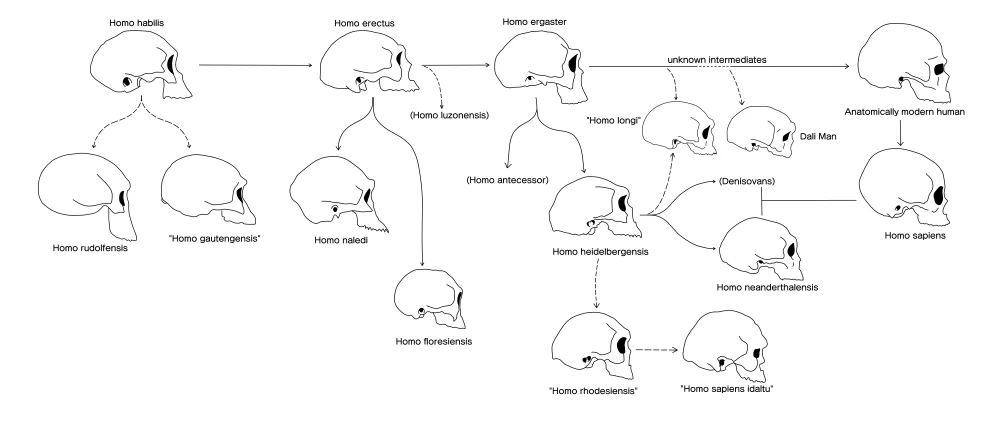
Changes to the skull (sans mandible) in species of Homo/SimplisticReps/Wikimedia Commons
The population of Chagyrskaya Neanderthals was relatively small, around 20 individuals. They also exhibited patrilocality (more than 60% of young women moved to other communities, while men remained in their native group). This means that there was definitely no matriarchy among Neanderthals. The backbone of society consisted of men, associated with the habitat and homeland. Women, on the other hand, presumably helped establish good neighborly relations with other communities.
This research demonstrates that paleogenetics can illuminate the social dynamics of ancient human populations, even when only a few bones remain. We now understand that the late Altai Neanderthals were remarkably scarce and lived in small groups, with familial bonds upheld through female migration. However, it is possible that these individuals inhabited remote corners of the easternmost Neanderthal territory, limiting their interactions with others.
